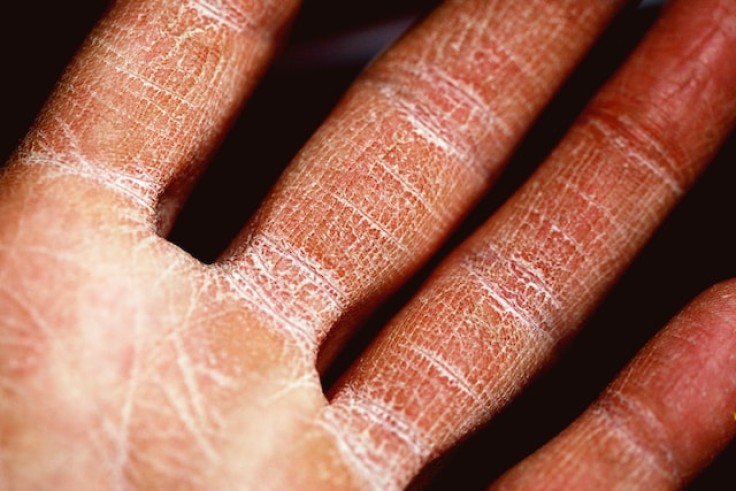
Eczema is not just a skin-deep issue; it's a widespread medical condition that currently affects over 31 million people in the United States, according to data from the National Eczema Association. The numbers are alarming, and what makes eczema more complicated is its range of symptoms. From dry, itchy, flaky skin to more severe manifestations like rashes, this skin condition can be uncomfortable, painful, and emotionally taxing.
Main Types of Eczema: A Comprehensive Overview
The term 'eczema' serves as an umbrella that covers seven different types: atopic dermatitis, contact dermatitis, dyshidrotic eczema, nummular eczema, seborrheic dermatitis, and stasis dermatitis. Each of these forms has unique triggers, symptoms, and treatments, which makes understanding them crucial for accurate diagnosis and effective treatment.
Atopic Dermatitis: The Most Common Type
Atopic dermatitis is the most prevalent type of eczema, affecting about 7.3% of American adults. The term "atopic" refers to an allergen sensitivity, implying that the skin condition typically triggers an inflammatory response following exposure to certain allergens. This inflammation subsequently weakens the skin's natural barrier, leading to classic eczema symptoms such as dryness and itchiness.
Contact Dermatitis: The Irritant and Allergic Forms
Contact dermatitis is categorized into two subtypes: irritant contact dermatitis and allergic contact dermatitis. The condition manifests when you come into direct contact with an irritant or allergen. For instance, if you're allergic to nickel, wearing a piece of jewelry containing this metal can induce an allergic reaction. Symptoms may develop hours or even days after exposure.
Dyshidrotic Eczema: The Mystery Remains
This type of eczema leads to the appearance of small blisters, predominantly on the hands and feet. Despite ongoing research, the exact cause of dyshidrotic eczema remains unknown. It frequently coexists with other forms of eczema and may also be hereditary.
Nummular Eczema: Triggered by Various Factors
Nummular eczema manifests as round or oval patches of itchy skin. While the triggering factors can range from stress and humidity to physical injury, they mainly target extremely dry skin. It is also often found coexisting with other types of eczema.
Seborrheic Dermatitis: Not Just Dandruff
While many associate it simply with dandruff, seborrheic dermatitis can affect other oil-producing areas of the body, such as the upper back and the nose. It leads to an itchy rash and flaking skin, particularly on and around the scalp.
Stasis Dermatitis: A Circulatory Issue
Unlike other types, stasis dermatitis occurs as a result of poor circulation, mainly in the legs. This condition leads to itchiness, inflammation, and discoloration in the affected areas.
Identifying Eczema Triggers: The First Step to Management
Understanding the common triggers-ranging from irritants like soaps and detergents to allergens such as dust mites and pet fur-can help you prevent flare-ups. Even food allergies and hormonal changes related to menstruation or pregnancy can set off symptoms. Personalized treatment starts with pinpointing these triggers.
Tailored Treatments: More Than Just a Cream
Treatment options can vary substantially depending on the specific type of eczema one has. Options can range from emollients and topical corticosteroids to more advanced treatments like antihistamines and phototherapy. Your healthcare provider might also offer valuable self-care tips, such as bathing practices and moisturizing routines, to help you manage symptoms better.
Read Also: Life-Changing Treatment Transforms Toddler's Severe Eczema, Alleviating Excessive Liquid Discharge
When to Consult a Healthcare Provider: Early Intervention is Key
Immediate consultation with a healthcare provider is essential if you have concerns about eczema symptoms. Accurate diagnosis is the cornerstone for effective treatment and long-term management of this often complicated skin condition.
Diagnosis Process: Beyond the Skin Test
The diagnosis generally starts with a physical examination and may include a comprehensive personal and family medical history since some types of eczema have hereditary links. Additional tests such as skin biopsies, allergy patch tests, or prick tests may be performed for a more conclusive diagnosis.
Eczema is a complex condition that demands a multi-faceted approach for effective management. From understanding the seven main types to identifying triggers and selecting the appropriate treatment, a healthcare provider's guidance is invaluable. So if you or someone you know is grappling with eczema, seek medical advice promptly for a diagnosis and a personalized treatment plan.
Related Article: Virgin Coconut Oil: How to Use for Baby's Eczema Treatment